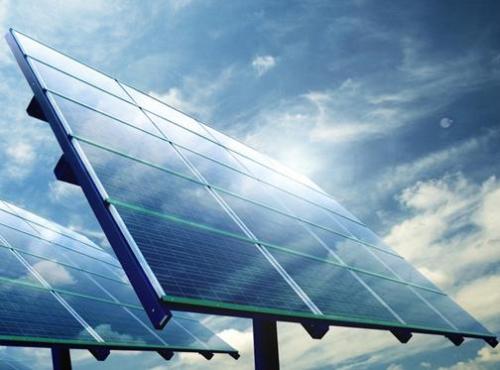Photovoltaic power technology weaknesses must be faced
2023-05-31 12:11:37
 After China and Europe reached an understanding on the PV trade dispute, the domestic photovoltaic industry will usher in another good news. It is reported that relevant departments will clarify the preferential policies for 50 percent of the value-added tax of PV power plant projects in the near future, which is equivalent to an increase of 0.02-0.04 cents/kWh for on-grid electricity prices.
After China and Europe reached an understanding on the PV trade dispute, the domestic photovoltaic industry will usher in another good news. It is reported that relevant departments will clarify the preferential policies for 50 percent of the value-added tax of PV power plant projects in the near future, which is equivalent to an increase of 0.02-0.04 cents/kWh for on-grid electricity prices. The photovoltaic industry has a rapid boost effect on local economic growth and is therefore favored by governments at all levels. However, the structural contradiction of oversupply of the industry has not been effectively resolved. The soon-to-be-released PV power plant tax rebate policy is precisely to promote the downstream consumer market. However, the road to the redemption of the photovoltaic industry lies in the breakthrough of the application technology bottleneck.
Although the PV project has a relatively high threshold for funding, it can immediately bring upstream and downstream industries such as wafers, modules, inverters, and storage batteries to develop simultaneously, and then achieve rapid improvement in the local economy. For this reason, in recent years, various regions have competed to build photovoltaic industrial parks and other projects, and they are expected to take the lead in becoming the “engine†of economic growth. As a result, the photovoltaic industry has rapidly expanded its production capacity under the influence of administrative external forces. While the government sector is “splitting up†the photovoltaic industry, it neglects its own structural optimization so that its “two out†characteristics are obvious: upstream polysilicon Such raw materials are heavily dependent on imports. After domestic companies produce solar cells, battery modules and other photovoltaic products, most of them will be exported overseas, while the EU region will account for about 70% of the total. The high dependence of the photovoltaic industry on overseas markets has aggravated the industry's volatility risks. In the earlier period, due to negative factors such as the European debt crisis and Sino-EU trade disputes, many photovoltaic companies have to struggle in the long “cold winterâ€.
What needs to be emphasized is that although this trade war between China and the EU has finally proved to be a shock, it has sounded the alarm for the domestic photovoltaic industry. Only actively tapping the domestic consumption potential can reverse the fate of domestic PV companies in the overseas market. . In this regard, the relevant departments to introduce preferential policies for the VAT rebate of photovoltaic power plant projects is to reduce the price difference between photovoltaic power generation and traditional coal-fired power, and to expand the application market for new energy power. In fact, when the Sino-European trade stalled last year, relevant departments had also provided subsidies of 0.4-0.6 yuan/kWh for distributed photovoltaic power generation projects. Their purpose is exactly the same as the current tax rebate policy. In fact, the EU and other regions will also provide certain financial subsidies for new energy power plants, in order to speed up the new energy projects in the early stages of the market to expand the speed. However, it should be pointed out that although these policies are favorable, they will be welcomed by the enterprises in the industry. However, in order to inject the inherent vitality of sustainable development for the photovoltaic industry, it is necessary to start with the cultivation of core technologies.
The data shows that the current domestic market's digestion capacity for photovoltaic power generation is less than 5% of the existing production capacity. The underlying reason lies in the lag in grid-connected photovoltaic power generation technology, which in turn raises the cost of clean energy use. Taking photovoltaic power generation distributed access as an example, this approach will change the shape of the traditional distribution network and impose higher requirements on the protection of current quality and the maintenance of voltage frequency stability. A single fund support is not a fundamental policy.
Therefore, while the relevant departments provide special financial subsidies for photovoltaic power generation applications, they should also set up and improve relevant technology innovation incentive mechanisms to improve the company’s independent intellectual property management and support capabilities. Government departments can establish a technology incubator platform that is connected to the photovoltaic industry park to accelerate the transfer of professional talents, feedback on technical bottlenecks, and the transformation of experimental results, and comprehensively promote the technical upgrading of the photovoltaic industry.
Flat Webbing Sling,Flat Sling,Flat Lifting Slings,Flat Woven Webbing Sling
Jiangsu Zhongyi Work Rigging Co., Ltd. , https://www.zy-rigging.com